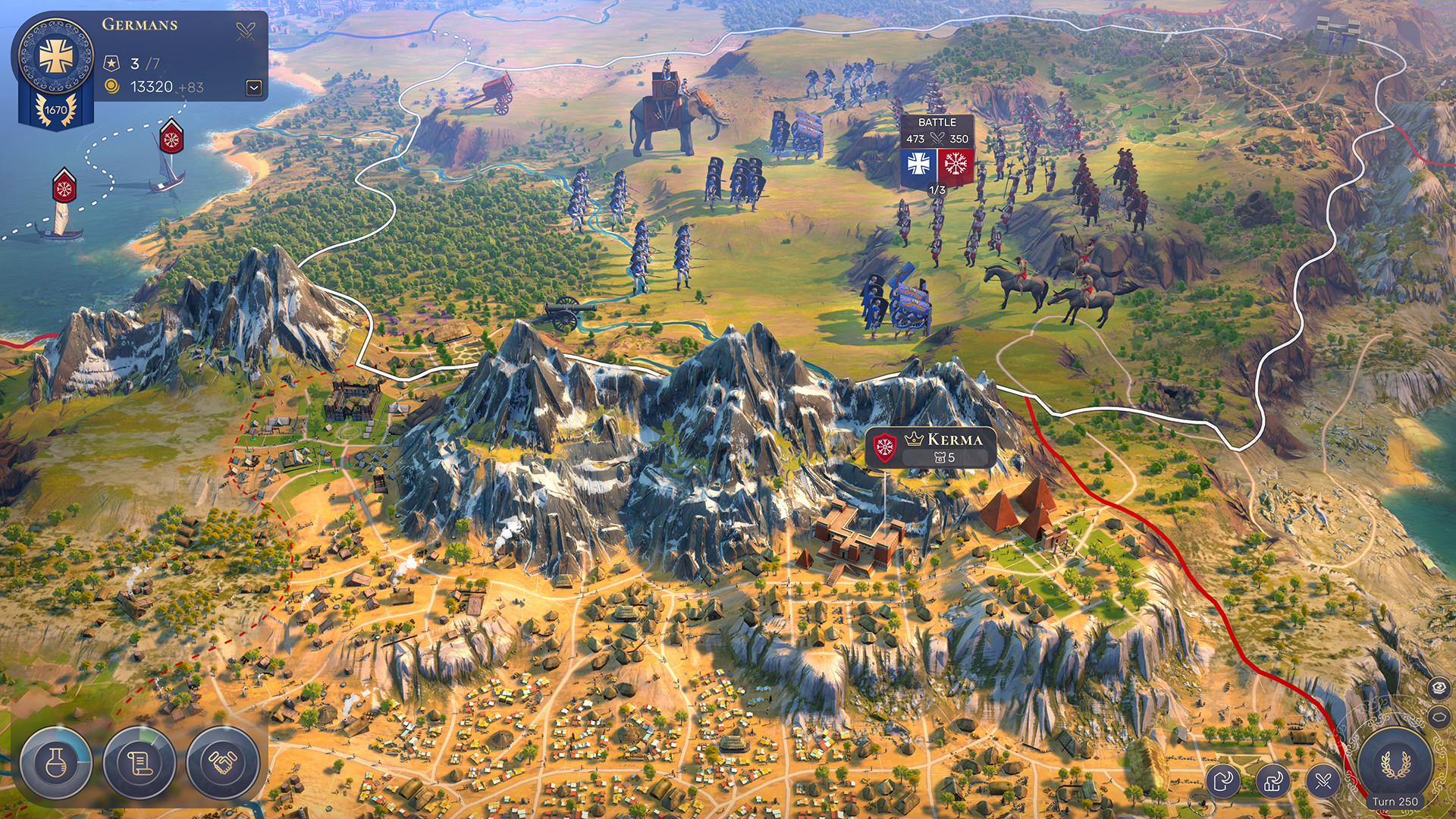Elhoim
Iron Tower Studio Dev
The thing I like the most about the game in general is how it focuses on a few core concepts with its rules, keeping them at a manageable level so that you can juggle with them in your head. The same goes for combat bonuses:
- Bonus on high ground.
- Penalty on river.
- Forest bonus vs ranged.
- Flanking.
- Role bonus (vs cavalry, for example).
- Special ability (Hoplite when next to each other, Immortals on high ground).
- Fortification on Sieges.
- Unit experience.
I might be missing something, as I can't check with the game right now, but it's just 6-8 concepts that you can easily remember and just act more instinctively when creating tactics. It makes terrain very important, and unit roles quite clear. This makes the battles fast and satisfying to play once you learn core concepts.
Adding more modifiers that make sense (defense, flanking angles) might probably muddy up the numbers for very little tactical gain. Not saying that they are bad ideas or that I don't agree with them, but I keep thinking about the quote "Perfection is achieved not when there is nothing more to add, but when there is nothing left to take away." I believe that they distilled the system to the base concepts that make the most impact, and works very well.
About the damage per point difference, it might be a bit high, but I think it's needed for two reasons: To highlight the importance of tactic advantage, and to make combat faster. If it's toned down, it would be units slowly chipping away HP dragging the combat. And from the scenario 1 experience, you can create units really fast. If you queue them up, production overflows and you can even create 2-3 units in a single turn in a good production city and experience seems to be gained quite fast. I believe the game is designed around losing units in combat, so unless for some reason the player considers the only good combat outcome is the one in which he doesn't lose any units, the high HP loss per point difference is fine and balanced.
This doesn't mean combat is perfect, as many noted it needs some improvements on UI, animation flow and Line of Sight, and may need a few additions and numerical tweaks, but the base framework is extremely fun and well designed.
- Bonus on high ground.
- Penalty on river.
- Forest bonus vs ranged.
- Flanking.
- Role bonus (vs cavalry, for example).
- Special ability (Hoplite when next to each other, Immortals on high ground).
- Fortification on Sieges.
- Unit experience.
I might be missing something, as I can't check with the game right now, but it's just 6-8 concepts that you can easily remember and just act more instinctively when creating tactics. It makes terrain very important, and unit roles quite clear. This makes the battles fast and satisfying to play once you learn core concepts.
Adding more modifiers that make sense (defense, flanking angles) might probably muddy up the numbers for very little tactical gain. Not saying that they are bad ideas or that I don't agree with them, but I keep thinking about the quote "Perfection is achieved not when there is nothing more to add, but when there is nothing left to take away." I believe that they distilled the system to the base concepts that make the most impact, and works very well.
About the damage per point difference, it might be a bit high, but I think it's needed for two reasons: To highlight the importance of tactic advantage, and to make combat faster. If it's toned down, it would be units slowly chipping away HP dragging the combat. And from the scenario 1 experience, you can create units really fast. If you queue them up, production overflows and you can even create 2-3 units in a single turn in a good production city and experience seems to be gained quite fast. I believe the game is designed around losing units in combat, so unless for some reason the player considers the only good combat outcome is the one in which he doesn't lose any units, the high HP loss per point difference is fine and balanced.
This doesn't mean combat is perfect, as many noted it needs some improvements on UI, animation flow and Line of Sight, and may need a few additions and numerical tweaks, but the base framework is extremely fun and well designed.

